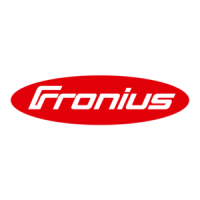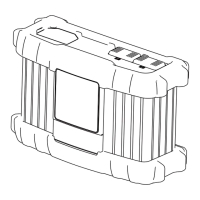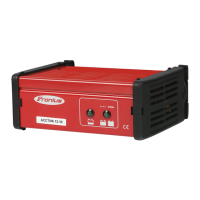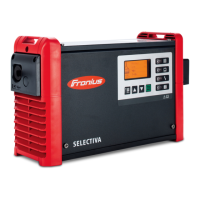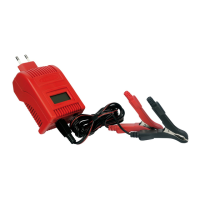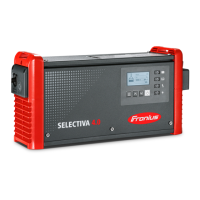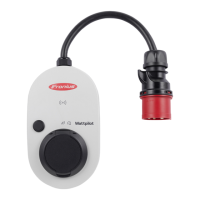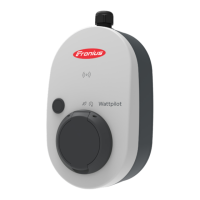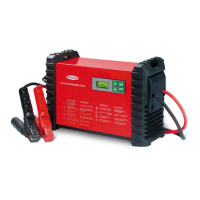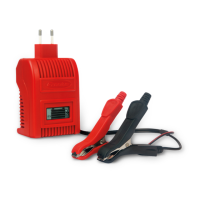Two 3-phase heating elements up to 9 kW
Application ex-
ample 6
L1 L2 L3 N L3 N L2 N NC W OUT NNO
R2 R3
LAN
RS485
PT1000
max. 16A
(3)
(5)
(13)
(12) (11) (10) (9) (8)
(2) (4)
(7) (6)
(1)
(15)
(14)
(1)
External earth
(PE)
(1) Ferrite rings (included in scope of delivery)
(2) Temperature sensor PT1000
(3) Hot water boiler
(4) External source (e.g. gas-fired heating)
(5) Heating element 1 (max. 9 kW)
(6) Buffer
(7) Heating element 2 (max. 9 kW)
(8) Contactor switching
(9) Output up to 3 kW variable, max. 13 A resistive load, spring-loaded ter-
minal 1.5 - 2.5 mm
2
(10) Multifunctional relay output
(11) Output - L2 heating element
(12) Output - L3 heating element
(13) Input - grid supply 3x 230V network, spring-loaded terminal 1.5 - 2.5
mm
2
.
(14) Residual-current circuit breaker
(15) Automatic circuit breaker max. B16A
Many heating systems consist of a boiler and a buffer, whereby the central heat-
ing supplies the buffer, and a control system feeds the hot water boiler via a
pump. As with thermal photovoltaic systems, the Ohmpilot is also capable of
heating the hot water boiler first and then the buffer, so that the maximum
amount of photovoltaic surplus energy can be stored.
The Fronius Smart Meter records the current power at the feed-in point and
transfers the data to the inverter. By controlling the Ohmpilot, the inverter ad-
justs any surplus energy that is available to zero. Specifically, this takes place by
continuously adjusting the heating element connected to the Ohmpilot.
For this application, two heating elements are installed, with preference being
given to activation of the first heating element (5). Only once the maximum tem-
perature in the boiler (3) has been reached is the second heating element (7) ac-
tivated in a continuously variable manner, so that the remaining energy can, for
example, be stored in a buffer.
If no temperature sensor is connected to the Ohmpilot, after 30 minutes the
Ohmpilot attempts to output energy via the first heating element once again. If a
temperature sensor is present, the system switches back to the first heating ele-
33

